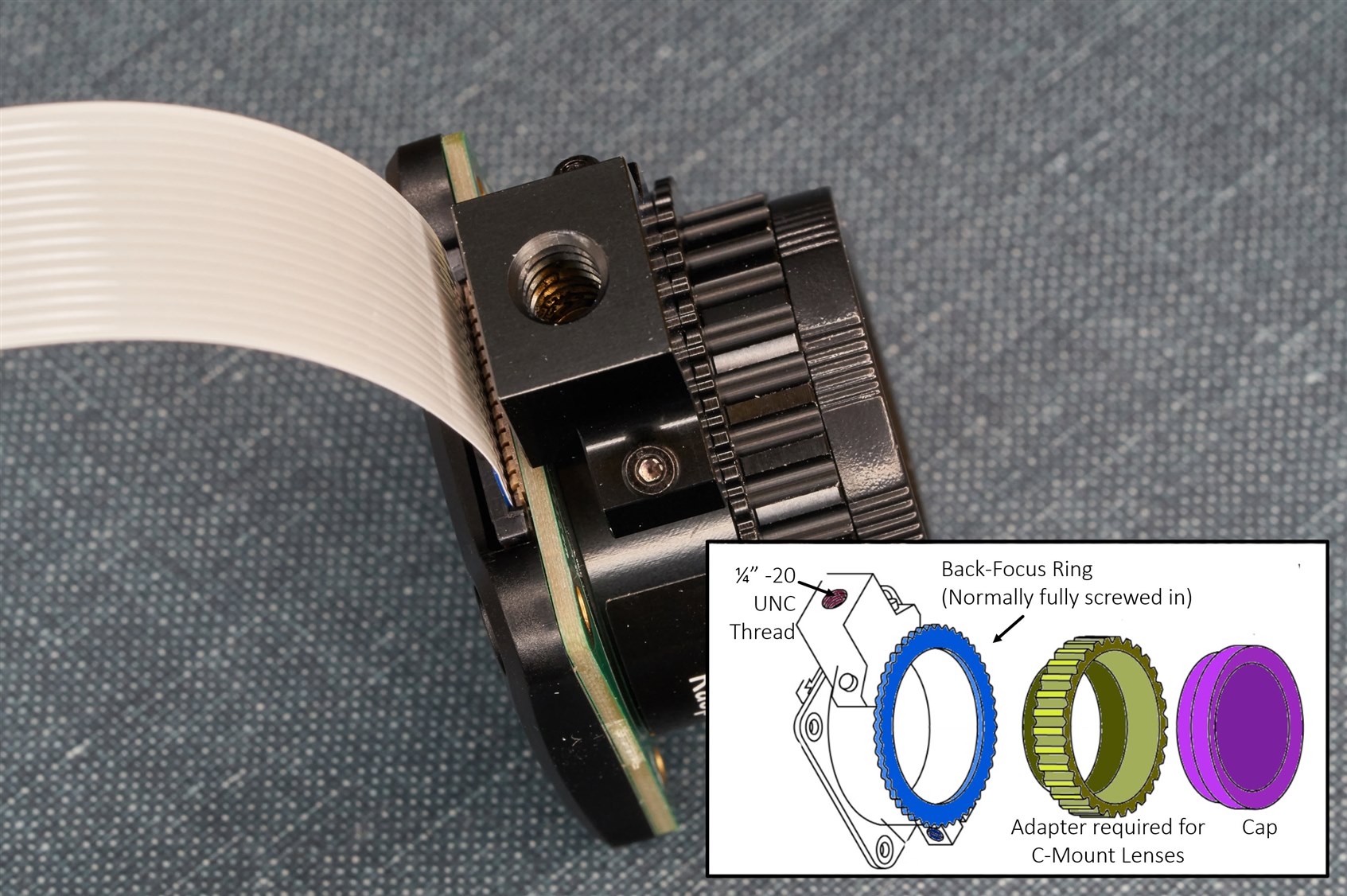The new Pi Global Shutter Camera (see the announcement) may be suitable for AI experimentation, so I decided to get one! I believe it should be electrically compatible with both the Pi as well as the NVIDIA Jetson Nano, so I think I can get some good use out of it.
The Sony IMX296LQR-C sensor (sensor PDF flyer; see page 3-4) inside the camera is of a sensible resolution (not quite Full HD, but close, at 1440 x 1080 useful pixels), and it has a 1/3" sensor size, and square 3.45 x 3.45 um pixel size, and operates up to around 60 frames per second. Unlike the older non-global-shutter camera, this new camera uses a sensor intended for machine vision use. The older product used a sensor intended for consumer cameras.
The photo below shows everything that comes inside the box, apart from a little bag of silica gel. There's no static shielding bag or any instructions, you'll have to go to the Raspberry Pi website to access the camera documentation.
The little screwdriver is used if it becomes necessary to loosen or tighten a back-focus ring for trimming the distance between the lens and sensor (ordinarily one shouldn't need to make any adjustment if the ring is fully screwed in).

The flat flex is 150 mm long (I separately purchased a 300 mm length flat flex, in case it becomes necessary; you can also get cable joiner adapters, but there is a finite limit on how far it can be extended! these cameras are not intended for long-distance connections via flat flex, since high-frequency signals travel down them).
The photo below shows the various elements of the camera.

(Diagram source: The drawing is taken from the Raspberry Pi website)
The screw thread (indicated in the photo above) fits typical tripods, although the flat flex will get in the way a bit, so a bit of care is needed to be gentle when doing that.
The photo below shows there are some test points (the bottom one is labeled GND, I noticed afterward that I didn't capture that in the photo!).
The rear cover is plastic, whereas the lens and tripod mounts on the other side are metal. The plastic is curved, it isn't used for mounting, and it seems to be acting as just a cover for the electronics. The four holes will suit M2.5 screws.

I don't get how this camera is supposed to be mounted; maybe I'm missing something, but it seems awkward because you won't want to screw the PCB because it may flex it (and the weight of any lens would also flex the PCB a certain amount, although I hope it would be negligible, I see no recommendation one way or another on the documentation page). That leaves just the tripod mount as a suitable mounting point, but then it seems odd to affix the enclosure and the tripod to that point. If anyone has a sensible enclosure recommendation, please share it!
In hindsight, I should have purchased a camera lens. I searched around and found a lens, but it's not going to be of high quality (it is from an old standard-definition CCTV camera).
Note that C-mount and CS-mount lenses have the same thread, but if you have a CS-mount lens, the adapter ring (that was indicated in one of the photos above) would need to be unscrewed so that the focal plane of the lens can reach the sensor.
I fitted my temporary lens in an un-dusty location since it's not fun cleaning out a sensor when dust lands on it (rookie tip: never use a can of bottled air, even if it states it is just air, it will still definitely leave a chemical residue; instead, there are rubber-ball type air dusters that are useful if dust attaches).

I have not tried the camera yet, so I'll write some more once I have done that. Currently, I have no idea what the image will be like, but I can compare it with another (much older Sony IMX136LQJ [PDF flyer]) machine vision camera that I have.
The sensor in this Raspberry Pi camera is not the latest generation either, but it is a fraction of what an industrial machine vision camera would cost (although I wish more thought had been applied to enclosure mounting options instead of what seem like near-pointless plastic injection moldings!). Still, I'm excited to have what may turn out to be a fairly decent camera for machine vision and AI purposes, especially if the enclosure mounting issues are somehow worked around.
Thanks for reading!








